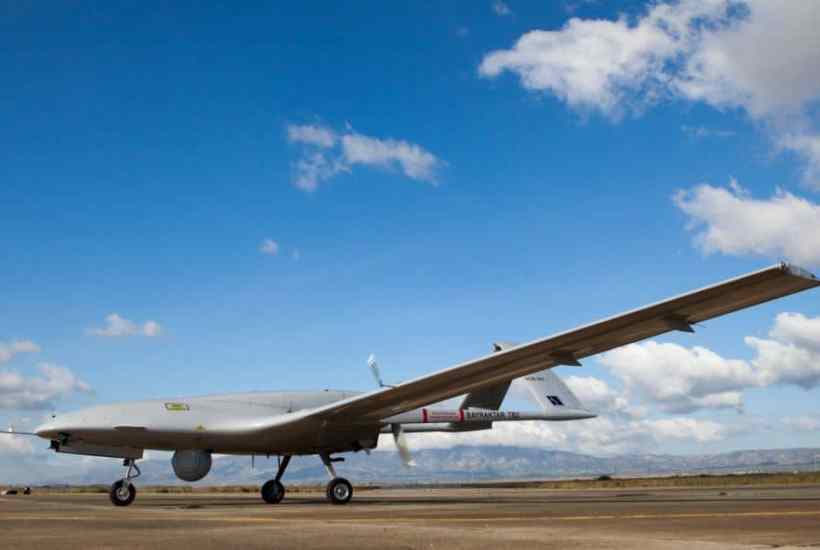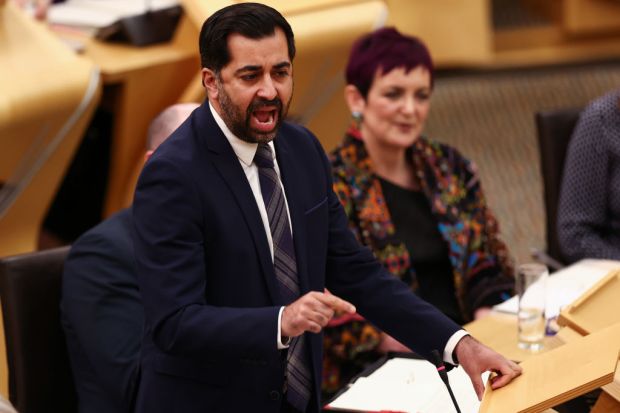Last week’s announcement that US officials believe Iran was behind the October drone strike on the al-Tanf US base in southeastern Syria did not garner the headlines it should have done. But it was nevertheless yet another reminder that drone technology is altering geopolitics – whether we like it or not.
As Seth Frantzman points out in his recent Drone Wars: Pioneers, Killing Machines, Artificial Intelligence, and the Battle for the Future – the most comprehensive and important book on drone warfare ever written – drones are already transforming modern conflict. A drone killed Qasem Soleimani last year in Iraq; Turkey has been using them in Syria for years; while Iran now uses drones not only to strike US targets but also to enable its proxies in Gaza and Yemen.
It seems clear that drones are quickly becoming the most important weapon systems in states that want to dominate future battles. Notably the US, China, Russia, Israel, Iran and Turkey have all contributed to the technology’s rapid evolution over the last few decades.
The United States and Israel began the age of drones: they developed the technology and then spread it, as part of the Global War on Terror. Disastrous Middle East ground wars taught Washington that it was safer to take out bad guys from UAVs (Unmanned Aerial vehicles) piloted from Nevada than drop Special Forces into Iraqi hillsides.
But as the US spread this tech, it began to lose control over it. Washington initially provided drones to Ankara for its counterinsurgency campaigns against the Kurdistan’s Workers Party (PKK) but as tensions between the two powers rose, it stopped the flow of equipment. Turkey faced a choice: cease using drones or develop an indigenous capability. It chose the latter.
The fruits of its efforts are plain to see. Turkish drones were decisive in the 2020 Nagorno-Karabakh war between Armenia and Azerbaijan. That same year a Turkish ‘drone blitzkrieg’ campaign destroyed dozens of Syrian regime vehicles and anti-aircraft weapons. Everywhere Turkey has a military footprint there are drones front and centre. Turkey even sent drones to support the Libyan government against General Khalifa Haftar. But just as the tech rebounded on Washington, so it has on Ankara. Haftar, backed by Russia and China, has now used Chinese drones to attack Turkish positions leading to the world’s first drone vs drone war.
The Haftar example highlights the relationship between drone tech and weaker states. Frantzman identifies four main drivers behind drone proliferation. First: drones have become ‘a kind of poor man’s air force for countries’ that can’t afford an air arsenal. Second: their size and comparative lack of sophistication makes them far easier to deliver – which means trade and weapon embargoes can be broken without too much difficulty. Third: you don’t need to train pilots to fly them. And fourth: the so-called small wars – in Libya, Syria and elsewhere – now function as laboratories for countries to test their technologies.
This is evident from a cursory look across the world’s battlefields. When states like Iran want to strike back at their enemies – generally the US, Israel or the west in general – it is drone technology they increasingly use. The al-Tanf strike shows exactly why. It’s clear that Iranian tech and know-how was behind the strike but the drone was not launched from Iranian territory – making it more difficult for the US to justifiably respond in kind.
In the recent Gaza conflict Hamas flew Shabab drones that resembled Iran’s Ababil 2 drone. The Ababil is in turn almost identical to the Qasef drone used by Tehran’s other client, the Houthis in Yemen. Iran can now strike at the US, Israel and Saudi Arabia without having to fire a shot. And it does all this using technology that still comes in at less than the cost of a handful of US F-35 fighter jets.
It’s all getting a bit dangerous. As Frantzman correctly observes, ‘drones are a kind of Rashomon, where everyone who sees them sees something different.’ Where the US sees a terrorist killing weapon, Iran sees drones as their own ‘Freedom fighters.’ The issue is that drones empower both, and it’s countries like Iran – because they are far weaker militarily – who gain the most from the technology.
What can we do? First, we must be realistic. Now that the technology has been developed any attempts to stop drones being used are behind the curve. The bell cannot be unrung. We must now ensure that as the technology improves, we find ways to stop rogue states using this technology to act with the impunity we saw recently in Syria.
<//>
Got something to add? Join the discussion and comment below.
Get 10 issues for just $10
Subscribe to The Spectator Australia today for the next 10 magazine issues, plus full online access, for just $10.




















Comments
Don't miss out
Join the conversation with other Spectator Australia readers. Subscribe to leave a comment.
SUBSCRIBEAlready a subscriber? Log in